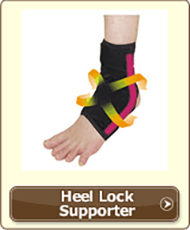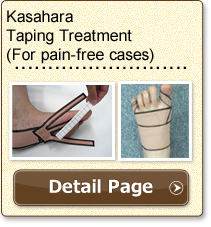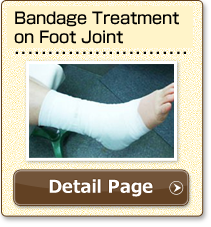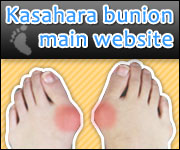Heel pain
(Bone spur on calcaneal bone)
Condition
A bone spur on the calcaneal bone is characterized by a tingling and stinging pain on the heel when you first walk at the beginning of a day although the pain decreases throughout the day. In advanced cases, every step is painful, making it difficult to walk with the heel striking the ground. The protrusion on the heel bone, called the “bone spur”, can be felt by pressing the area.
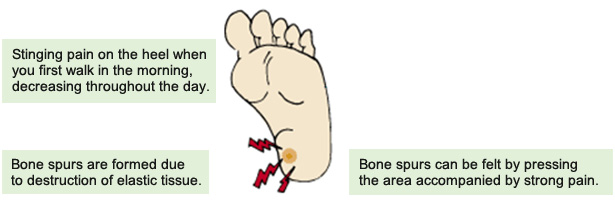
Cause
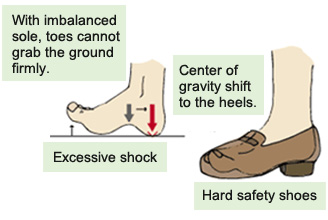
Indicators of an imbalanced sole, such as ungrounded toe or flatfoot, shifts the center of gravity towards the heels, and the heels strike the ground with great force. It can also be caused by walking with hard safety shoes as well.
Additionally, as elastic tissue is destroyed due to a decline of hormone balance, bone spurs are formed with calcification.
Treatment
At early stage, although it is not visible on an X-ray, a strong pain can be felt when the heel is struck. At later stages, the bone spur is clearly visible on an X-ray.
In advanced cases, one option is to remove the born spur in surgery. Alternatively, a conservative treatment is to practice the bandage treatment with a cushioning material on the arch of a foot. Absorption of callus luxurians is promoted by continuing treatment for 6 months to 1 year.
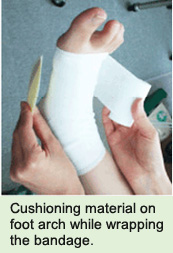
On the Kasahara Taping Treatment (for pain-free cases), it is a good way to wrap the bandage from the ankle to the roots of toes with cushioning material.
As a simpler alternative, please wear 3-toe socks after the bandage treatment. The heel lock supporter can be used when it is difficult to wrap the bandage.
It is important to allow the bone or soft tissue to rest, and thus, try to choose shoes with good cushion and adjustable laces or use our seismic isolation insole (artificial muscle insole).
Related products



